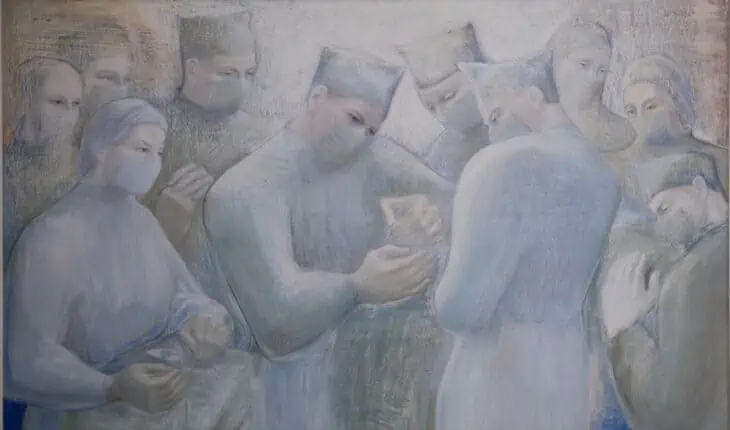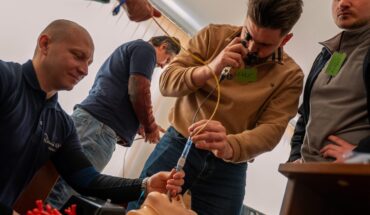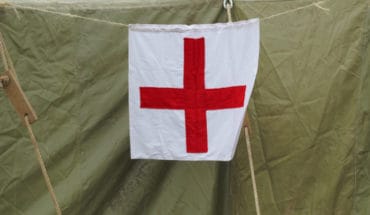After a six-year closure and a £4.6 million re-design, by award winning design studio Casson Mann, the Hunterian Museum re-opens its doors on 16th May, as part of a larger redevelopment of the Royal College of Surgeons of England’s headquarters at Lincoln’s Inn Fields in London.
Dawn Kemp, Director of Museums and Special Collections at the Royal College of Surgeons of England says, ‘This May marks the 210th anniversary of the Hunterian Museum opening at the Royal College of Surgeons of England. It is tremendously exciting to be able to welcome the public back. The Hunterian Museum has been a place where history has been made both for good and bad. The place where the dinosaurs were named; where Charles Darwin came for advice on the fossils he found half the world away; where the pioneer of computing, Charles Babbage sent his brain to be put on display. It is also where some of those closely involved in the Western ‘colonial project’ developed sinister and awful ideas on racial theory. Its history makes it a unique place to contemplate what it is to be human. A place to reflect and consider our shared and finite natural world and our responsibility to care for the well-being of our fellow humans and all living things. A place to exchange ideas and views and to review our shared histories through the widest possible lens.’
Amongst the fascinating objects on display are over 2,000 anatomical preparations made by the 18th century surgeon anatomist John Hunter, after whom the museum is named, displayed alongside instruments, equipment, models, painting and archive material which trace the history of surgery from ancient times to the latest robot-assisted operations.
At the centre of the museum and on permanent display for the first time is Concourse, Barbara Hepworth’s powerful homage to surgery. Part of Hepworth Hospital Drawings series, made in 1948, the same year the NHS was born, Hepworth aimed to capture the ‘extraordinary beauty of purpose and co-ordination’ of surgical teams in these sketches. In the composition a surgeon at the centre of the picture performs an operation, surrounded by assistants, all of whom wear surgical gowns and masks and keenly observe his work. Hepworth became fascinated by the surgical teams during long hours spent watching operations
Teamwork is also at the heart of a newly commissioned film of an orthopaedic operation performed at the Wirrall University Teaching Hospital. With the use of time-lapse editing a 90-minute operation is condensed to just ten, revealing a ballet-like choreography as the surgical staff give all their attention to the patient, centre stage.
The Hunterian Museum is one of the very few places in the UK where the public are able to see surgical specimens prepared in order to show human anatomy. Under the Human Tissue Act it is only legal to publicly display human remains more than one hundred years old.
Scottish born John Hunter, the 18th century surgeon anatomist, after whom the museum is named, worked at his brother William’s anatomy school before enlisting as an army surgeon. He quickly became an expert in the structure of the body and worked with the dentist James Spence before setting up his own anatomy school in 1764, becoming the most popular surgeon in Georgian London. A teacher and supporter of Edward Jenner who pioneered the smallpox vaccine, Hunter was an early advocate of careful observation and scientific observation in medicine. For this purpose he built up a vast collection of anatomical specimens, which came to include the stolen body of Charles Byrne, known as the “Irish Giant” against the deceased explicit wishes. Although contemporary newspapers claimed Byrne to be over eight feet tall in reality he was around 7 feet, 7 inches (2.31m). It is now known that Byrne’s skeleton shows evidence of pituitary giantism, a condition in which excessive growth is accompanied by delayed onset of puberty. The Museum preserves a glove, boot and stockings worn by Byrne in its collection.
Following John Hunter’s death in 1793, the government bought his collection of 14,000 specimens and in 1799 gave it to the Company of Surgeons (later the Royal College of Surgeons of England) for conservation, medical education and training. The first building to accommodate the Museum opened in Lincoln’s Inn Fields in 1813.
The re-opening of the Museum is accompanied by the launch of a new website, with digitalised collections, films, talks and key visitor information, designed by Brighton based digital agency Cogapp, in order to present the Hunterian Museum to a global audience
Roger Mann, Director of the design studio Casson Mann, says, ‘To re-imagine the display of the Hunterian Museum’s rich and varied collection was a unique opportunity to create a series of jewel-like galleries full of surprising and curious juxtapositions and wonderful stories. We hope that medical professionals and visitors alike will enjoy this journey of discovery and appreciate the extraordinary contributions of John Hunter and others who pioneered the field of medical and surgical knowledge.’
The history of surgery is dramatic and often unsettling with stories of terrible human suffering. Historic medical collections, like the Hunterian, are also incredibly valuable in giving us a better understanding of our own health and wellbeing and the complex issues that have arisen in the development of the art and science of surgery.
The Hunterian Museum, Royal College of Surgeons of England, 38-43 Lincolns Inn Fields, London WC2A
Free entry Tuesday to Saturday 10am to 5pm
- People’s Choice Victory for Down’s Syndrome Scotland Garden at Chelsea 2025 - 28th May 2025
- Cadogan: A Chelsea Family By Tamsin Perrett - 3rd May 2025
- Dream Worlds a new exhibition in Cambridge - 14th December 2024







